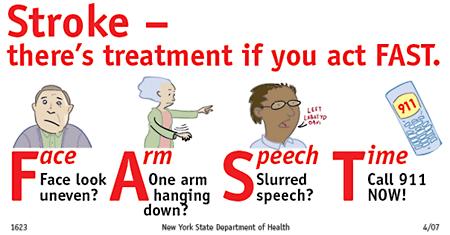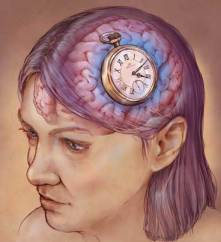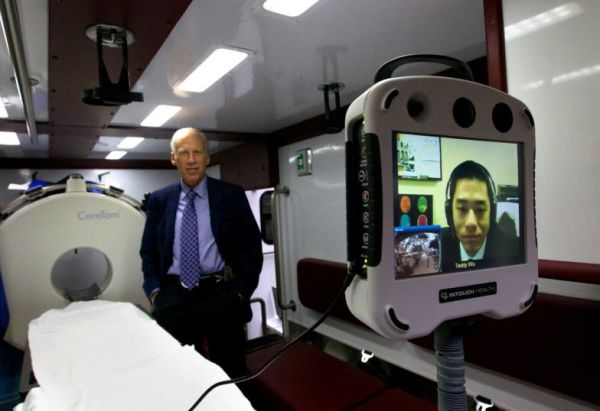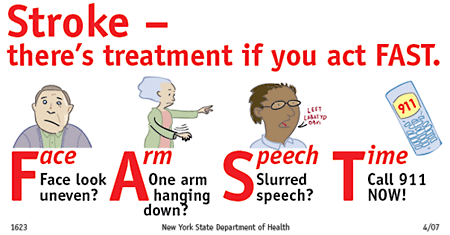
We are trying to do a better job educating our patients about the warning signs of stroke, and that if they think they might be having a stroke they should act FAST and call 911 to get to the ER as soon as possible.

However, despite these efforts only 5% of US stroke patients get to the ER in time to receive clot busting therapy to treat their stroke. Furthermore, the quicker the drug is given, the better the outcome, TIME IS BRAIN!

We would like to see patients getting treated within one hour of the onset of their stroke, but because of the time it takes to get to the hospital and get evaluated in the ER this is rarely possible.
A pilot study in Texas is looking at getting stroke therapy administered faster by bringing the ER to the stroke patient.

The project brings a mobile CT scanner and a stroke neurologist (via telemedicine) to the patient in a specially equipped ambulance. The investigators hope to see stroke patients getting treated faster and improved outcomes.

